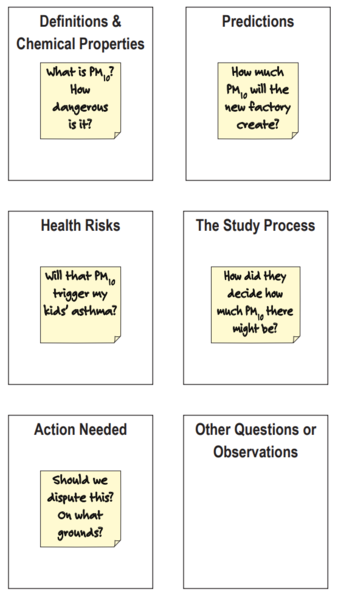Adapted from the Statistics for Action Air Quality Unit "A First Look at Technical Documents" and generously shared with permission. You can access a printable version of this guide at sfa.terc.edu
Click here for a facilitator's guide. Original print version.
Strategies for Reading Environmental Impact Statements
An Environmental Impact Statement (EIS) or Report (EIR) is a written summary of an environmental impact assessment. An assessment is required when a new project (factory, development, construction) might have an impact on environmental or human health. In some cases, an EIS is made before cleaning up a polluted site, to see if the cleanup itself would put anyone at risk.
An EIS answers the question, "If this proposed project goes forward, how could it affect the environment and/or public health?" It will not answer the political question, "Should this project be allowed to proceed?"
Typical Sections
Select a typical page or two from each of the following sections, if available:
- Introduction explaining why the project is being proposed
- Description of the places that might be affected
- Variety of alternatives for implementing the project. One should be a "No Action" alternative, predicting impacts if things were left as-is. This is used as a baseline for comparing the other alternatives.
Analysis of the environmental impacts of each of the alternatives, including things like:
impacts to threatened or endangered species
- impacts on air and water quality
- impacts to historic and cultural sites
- social and economic impacts on local communities
cost analysis for each alternative, including costs to mitigate expected impacts
Optional or Additional Sections:
Evidence of funding for the complete project
- Proposed environmental mitigation plans, if the preferred alternative will cause significant impact

Categories of Questions & Observations
Below are typical categories into which questions and observations can be grouped.

Originally published by TERC in 2014 with support from the National Science Foundation and shared with permission. Any materials posted on Public Lab are not endorsed by TERC or NSF and do not necessarily represent the views of either organization. Images courtesy of the Rini Templeton estate.

0 Comments
Login to comment.